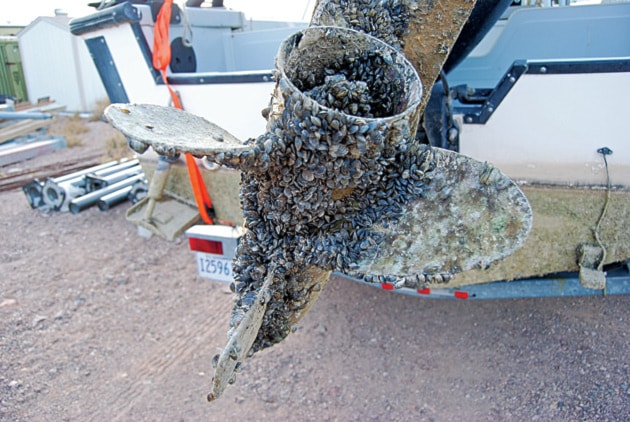The Pacific Northwest is the largest region in Canada and the U.S. that does not have established populations of invasive quagga and zebra mussels.
And officials want to keep it that way. Although doing so will be costly, prevention will be much cheaper than having to repair and replace infrastructure
A number of delegates from government and environmental organizations attended a meeting organized by the Pacific Northwest Economic Region on Dec. 3 in Vancouver.
Among them was Salmon Arm Coun. Chad Eliason, who is the Southern Interior Local Government Association (SILGA) rep on the Union of BC Municipalities board.
“Because SILGA brought three resolutions to UBCM in the last three years, I was asked to go and sit in on the meeting,” he says, noting representatives attended from Oregon, Washington, Montana, B.C., Saskatchewan and Alberta, areas which are so far free of the invaders. “Basically, what we talked about was how bad things are.”
The voracious mussels, which hitched a ride into the Great Lakes on a Russian freighter in 1988, have destroyed habitat across North America,
“The females lay a million eggs each and if you get 100,000 per square metre, and each lays one million eggs, and they get six growths a year...” he says, noting the mussels quickly overtake whole watersheds. “In Shuswap lakes, they would eat the phytoplankton, which is what young fish eat, and that would compromise the salmon.
“The lake would become very clear and things like milfoil and other plants can grow deep and taller, which further impairs the lake.”
There would be more weeds and more algae blooms and all water intakes, be they in the lakes, rivers or streams would be blocked.
“They got into Lake Winnipeg, the 11th largest freshwater lake in the world, in 2014 and they are now in the Red River.”
New ways to prevent the arrival of the invasive mussels is key and requires inspection stations for every boat entering every area not yet affected, says Eliason.
“Right now, we’re doing very little, but even if it costs millions a year for prevention, it will save us hundreds of millions for maintenance and repair,” he says. “There is no after-the-fact treatment.”
A working group has been established as a result of the meeting, one that includes government and non-government scientists, BC Hydro and Border Services, among others.
A report prepared for the meeting recommends mandatory boat inspection and decontamination at international borders and across provinces, elevate awareness of the threat and promote responsible behaviour, call on the federal government to prohibit the import of invasive mussels by changing the Fisheries Act and ask the Government of Manitoba to take measures to prevent the spread of the mussels.
“Everyone was concerned,” says Eliason. “We need to keep the pressure on.”
